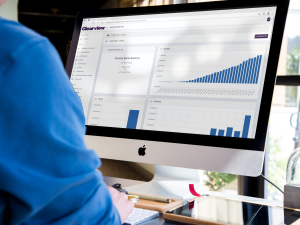11 July 2023
Producing a going concern forecast as part of a financial audit

For finance directors and finance managers alike, having a handle on a company’s financial health is crucial for success. If your business is big enough to have an annual financial audit, part of the reporting requirements is to produce a going concern forecast for 12 months from the date of signing the accounts. Put simply, this is to demonstrate that the business should continue to trade for the foreseeable future. Auditors must satisfy themselves that this is the case before they can sign off their audit report. In this blog post, we’ll explore the procedures for demonstrating going concern, discussing what they are and why they’re crucial.

What is a going concern?
In the aftershock of Covid19, and following high profile corporate failures such as Carillion and BHS, the Financial Reporting Council (FRC) updated auditing standards to focus more heavily on checking going concern as part of an audit. The revised standard requires a much stronger hand from auditors in challenging management’s assessments of going concern. The new requirements mean that companies must take going concern forecasts seriously as part of their annual auditing responsibilities.
A going concern is a business or company that can continue operating for the foreseeable future. This means that it has enough resources, capital, and cash flow to keep running and meet all its obligations. It’s a key concept in accounting and finance, as not being able to demonstrate a company is a going concern can impact how it’s valued and perceived by investors, stakeholders and ultimately the Directors personally. The going concern forecast should be made by management and then the auditor’s job is to review this forecast as part of the audit.
As a finance director or finance manager you may have heard of ISA 570, also known as the Going Concern Standard. The ISA 570 helps auditors identify and report going concern issues or risks, the audit process assesses the organisation’s ability to continue as a going concern using reasonable assumptions. The report should include:
– An evaluation of the organisation’s financial statement and support from its stakeholders
– An assessment of the organisation’s future financial performance
– An evaluation of the organisation’s cash flow and liquidity positions
– An assessment of the organisation’s ability to pay its debts on time
– An evaluation of the organisation’s plans to address identified uncertainties
To evaluate the overall financial health of the organisation a going concern audit opinion will be created by analysing cash flow, profitability, and any other relevant financial metrics. The auditor’s report will highlight any material uncertainty, for example, including any cash flow problems. In such instances, the going concern assessment would look at the company’s financial plan to determine how it intends to deal with the business being unable to pay its debts.
The Difference Between Material Uncertainty and A Going Concern
When it comes to financial reporting, it’s important to understand the difference between material uncertainty and a going concern. Material uncertainty refers to potential risks or contingencies that could have a significant impact on a company’s financial statements. On the other hand, a going concern refers to a business’s ability to continue operations in the near future. Any material uncertainties should be highlighted in the auditing procedure.
The Audit Procedure
Evaluate the Company’s Cash Flow Forecast:
The first step in the forecast of going concern is to evaluate the company’s financial position. This involves reviewing the organisation’s cash flow forecasts. Cash flow forecasts could be inaccurate due to changes in the market or unexpected expenses, so it is important the management’s assessment ensures they are correct. Previously, a company would likely only need a profit forecast or a cashflow forecast. Now you are highly likely to need to provide both. For the difference you can use Clearview’s cashflow calculator. Using cashflow software which integrates p&l, cashflow and balance sheet ensures the most complete view of a company’s forecast. These reviews will help determine whether the company is likely to continue operating for another year. In assessing the forecasts, external factors such as overall market trends or economic downturns should be considered.

Review Management’s Plans:
It’s important to review management’s plans and actions to address any problems with the cashflow forecast. To save valuable time doing this, it is often better to create a new, top level forecast for the purpose of the going concern review potentially using time saving software. Any uncertainties that may cast significant doubt on the company’s future operations should be identified first and a plan should be developed in order for the company to continue as a going concern. The auditor will review these plans to ensure they’re realistic and that the actions taken by the management will help the business with its cash flow issues.
Review Key Financial Ratios:
The auditor will also review the key financial ratios that are relevant to the organisation as they help determine the company’s financial health. The auditor needs to understand the significance of the ratios and how they relate to the company’s financial framework. For example, if a company’s liquidity ratio is deteriorating or below industry benchmark, this may indicate that the business may struggle to meet its debt obligations.
Consider Other Data:
Auditors will also consider other data that may indicate upcoming adverse events. Is the company experiencing operational difficulties? Is there significant legal action against the company? These indications should be examined carefully in detail. It may be necessary to get a more comprehensive review of these potential issues to understand them and their expected impact on the operations of the company.
Documentation Review:
The final step in the audit procedure for going concern is a documentation review. To ensure proper documentation the auditor will evaluate the company’s financial statements and management plans carefully. Considering the audit evidence, the auditor will make their assessment of the entity’s ability to continue as a going concern.
Timing
The going concern forecast must cover at least 12 months from the date of signing the accounts, not from the financial year end. This is why annual budgets cannot be used. Typically, a new forecast is needed that is presented as a stand-alone model set at a particular point in time. The forecast for this purpose does not need to be updated or be linked to updating data.
Clearview is THE financial forecasting software that makes going concern auditing and forecasting easy. It does all the hard work for you in the background, pulling together all the data. If you need an integrated view of your cashflow, p&l and balance sheet in one place to provide to your auditors or potential investors then Clearview can help you to do this quickly and accurately. There are no spreadsheets, no formulae, and no reports to configure. Clearview takes care of it all, so you can answer auditor’s questions quickly.
It is important for management to ensure there are no problems with cash flow forecasts before being passed onto auditors to provide an accurate going concern audit. Finance directors and finance managers should be aware of these audit procedures and ensure they are adequately prepared. Being proactive in this regard will help demonstrate the company’s viability. Without this, auditors cannot sign off their audit report, resulting in filing delays or damaging reductions in credit ratings on which suppliers and funders rely. A well-prepared going concern forecast allows this area of the audit to be covered as effectively as possible, saving both time and money.
Clearview can significantly speed up the process of preparing for a going concern audit for Finance manager and finance Directors. To start using Clearview, sign up for free today.


 March 17, 2025
March 17, 2025


